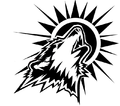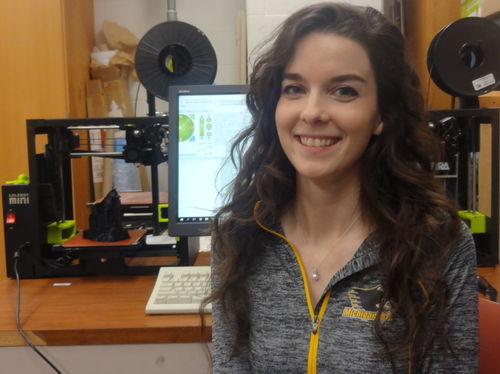Emergence of Home Manufacturing in the Developed World: Return on Investment for Open-Source 3-D Printers

|
By Michigan Tech's Open Sustainability Technology Lab.
Wanted: Students to make a distributed future with solar-powered open-source RepRap 3-D printing and recyclebot recycling. |

|
| This page is part of an international project hosted by MOST to use RepRap 3-D printing to make OSAT for sustainable development. Learn more.
Research: Open source 3-D printing of OSAT • RecycleBot • LCA of home recycling • Green Distributed Recycling • Ethical Filament • LCA of distributed manufacturing • RepRap LCA Energy and CO2 • Solar-powered RepRaps • solar powered recyclebot • Feasibility hub • Mechanical testing • Lessons learned • MOST RepRap Build Make me: Want to build a MOST RepRap? - Start here! • Delta Build Overview:MOST • Athena Build Overview • MOST metal 3-D printer • Humanitarian Crisis Response 3-D Printer |
| Economic Advantage to Making Your Own Stuff with 3D Printing |
|---|
Error in widget YouTube: Unable to load template 'wiki:YouTube' |
Source
- Emily E. Petersen and Joshua Pearce. Emergence of Home Manufacturing in the Developed World: Return on Investment for Open-Source 3-D Printers. Technologies 2017, 5(1), 7; doi:10.3390/technologies5010007 open access
- Supplementary: http://www.mdpi.com/2227-7080/5/1/7/s1
- Lulzbot Mini - source code: http://download.lulzbot.com/Mini/
Abstract
Through reduced 3-D printer cost, increased usability, and greater material selection, additive manufacturing has transitioned from business manufacturing to the average prosumer. This study serves as a representative model for the potential future of 3-D printing in the average American household by employing a printer operator who was relatively unfamiliar with 3-D printing and the 3-D design files of common items normally purchased by the average consumer. Twenty-six items were printed in thermoplastic and a cost analysis was performed through comparison to comparable, commercially available products at a low and high price range. When compared to the low-cost items, investment in a 3-D printer represented a return of investment of over 100% in five years. The simple payback time for the high-cost comparison was less than 6 months, and produced a 986% return. Thus, fully-assembled commercial open source 3-D printers can be highly profitable investments for American consumers. Finally, as a preliminary gauge of the effect that widespread prosumer use of 3-D printing might have on the economy, savings were calculated based on the items’ download rates from open repositories. Results indicate that printing these selected items have already saved prosumers over $4 million by substituting for purchases.Keywords
distributed manufacturing; additive manufacturing; 3-D printing; consumer; economics; open-source
See also
- Life-cycle economic analysis of distributed manufacturing with open-source 3-D printers
- Distributed Manufacturing of Flexible Products- Technical Feasibility and Economic Viability
- Impact of DIY Home Manufacturing with 3D Printing on the Toy and Game Market
- Quantifying the Value of Open Source Hardware Development
- Open-source, self-replicating 3-D printer factory for small-business manufacturing
- Distributed manufacturing with 3-D printing: a case study of recreational vehicle solar photovoltaic mounting systems
- Global value chains from a 3D printing perspective
- Economic Potential for Distributed Manufacturing of Adaptive Aids for Arthritis Patients in the U.S.
| This page is part of an international project hosted by MOST to use RepRap 3-D printing to make OSAT for sustainable development. Learn more.
Research: Open source 3-D printing of OSAT • RecycleBot • LCA of home recycling • Green Distributed Recycling • Ethical Filament • LCA of distributed manufacturing • RepRap LCA Energy and CO2 • Solar-powered RepRaps • solar powered recyclebot • Feasibility hub • Mechanical testing • Lessons learned • MOST RepRap Build Make me: Want to build a MOST RepRap? - Start here! • Delta Build Overview:MOST • Athena Build Overview • MOST metal 3-D printer • Humanitarian Crisis Response 3-D Printer |
In the News
- Just Press Print: 3-D Printing At Home Saves Cash - MTU News , Eureka Alert, Science Daily, Sofx, Xania News, Science Magazine, Mighigan Ag Connection, Vector News
- Could You Save Money by 3D Printing Household Items? - All3DP
- Using a 3D printer to print your household items could save you $12,000 - Digital Trends, TechSite
- 3D printing ordinary household goods can save you a lot of money, study finds - TechSpot, Zetfile, IT Breaking News
- Researchers calculate major cost savings of 3-D printing household items - Phys.org , HiTech Days, ECN Magazine, Science Bulletin
- 3D-printed household items mean major cost savings - Electronics Specifier
- 3D printing at home will save you money down the line, says new study from MTU - 3Ders, Longroom, STL finder
- License to Print Money at Home?- Engineering360 IEEE GlobalSpec
- Report Indicates That 3D Printing Can Save Consumers Up To $4 Million-One Angry Gamer
- How 3-D printing at home saves big bucks -- ScienceDaily- DailyMe, Eurasia Review, Last Min Christmas, KnowRidge Science Report
- MTU Study: 3-D Home Printer To Produce 1000 Percent Return Over 5 Years-MI Tech News
- New study shows how 3-D printing at home saves big bucks - Domain B, NewsR India ,Space Daily, NewsRoom America
- Like Making Money: Study Shows How 3-D Printing at Home Saves Big Bucks - Ideas, Inventions And Innovations
- Low-Cost 3D-Device Prints Your Household Items - News Island Crisis
- How to make money with a 3D printer: a conversation with Professor Joshua Pearce - 3D Printing Industry ,News New Zealand
- 3D-printing household objects could be top money-saving tip - E&T
- A low-cost open-source 3D printer can save you a lot of money Learn.ca
- Michigan Tech's Dr. Joshua Pearce Reveals the High Overall Return on Investment for At-Home 3D Printing Use-3DPrint.com
- 3D printing ordinary household goods can save you a lot of money, study finds-3dprinter blog
- Study suggests that buying a 3D printer can actually save you money in the long run-Aivanet blog
- 3D printing your household items could save you some serious cash, study finds - Yahoo Finance
- Should I Invest in a 3-D Printer? - Hidabrut - Jewish TV Network
- Michigan Tech Study: 3D Printing Ready for Prime Time - What They Think
- ASK HACKADAY: IS OWNING A 3D PRINTER WORTH IT? - Hack a Day
- 3D Printing: Should You Go Open Source? - Engineering.com
- Want to save a lot of money around the house? Buy a 3D Printer-ZME Science, New Inventions
- Study By Michigan Tech’s Professor Joshua Pearce Shows 3D Printing at Home Saves Money-3D Printing Business
- How to Save and Make money with a 3d Printer - Open Source Electronics
- 3-D Printing of Household Items Can Have Major Cost Savings - Builder Magazine
- Buy A 3D Printer And Get Your Money Back A Tenfold In 5 Years - Gypsy Ninja
- 3D Printers In The Average American Household- Computer Power User
- How buying a 3D printer can save you money - Opensource.com
- Obliterate the Cost of Consumer Products with Open Hardware- Open Health News
- 3D: A Status Report -Printing technology comes of age - American Libraries Magazine
- Imgur
- Making Your Own Goods and Products At Home: When Will Every Home in America Have a 3D Printer? - 3D Print (Feb 2018)
International
- Tuore tutkimus: Tällä tonnin investoinnilla säästät jopa 11 000 € viidessä vuodessa -Tekniikka & Talous (Finland) - Tech news circulation 61,850
- Fiksu ostos: 1000 euron investoinnilla säästät 11 000 euroa - Tivi (Finland) - monthly computer magazine circulation 156,000
- Tutkimuksen yllättävä tulos: unohda lähikauppa – 3d-tulostamalla taloustavaroita voi säästää sievoisia summia - Mikrobitti (Finland) Computer Magazine circulation: 29,553
- Se on vahvistettu: Tämä tonnin hankinta tuo jo viidessä vuodessa jopa 11 000 €:n säästön Talouselämä (Finland) economic weekly circulation:81,280
- 3D打印用于日常究竟能多省钱?半年回本,5年回报10倍- Weiot (China)
- MTU最新研究:在家3D打印除了省钱还能获得1000%的的高回报 - 24 Maker (China)
- MTU的新研究揭晓在家3D打印可以为您节省金钱 Wengu.Aniu.TC (China)
- MTU的新研究揭晓在家3D打印可以为您节省金钱 3DHoo (China)
- 3D打印用于日常究竟能多省钱?半年回本,5年回报10倍! Nanjixiong (China)
- 가정용 3D프린터 구매는 절약의 지름길??|작성자 3D프린트뉴스 - (Korea)
- Вокруг света с 3Dtoday: новый гидрогель для костной биопечати, итоги первого конкурса Hyperloop и исследование экономии от бытовых 3D-принтеров -3D Today (Russia)
- 3D-printer: met een rendement van bijna 1000% over 5 jaar een uitstekende investering Scientias.nl (Dutch)
- Wissenschaftliche Studie besagt, ein privater 3D-Drucker kann bis zu 1000 Prozent Rendite abwerfen - 3d-grenzenlos.de (German)
- Make a 100 percent or more return on your money with a low-cost open-source 3D printer- Innovation Toronto (Canada)
- Faites des économies grâce à l’impression 3D ! - 3D Natives (France)
- Kann man mit einem 3D-Drucker für den Heimgebrauch tatsächlich Geld sparen? - 3DRuck (German)
- Los efectos de tener una impresora 3D en casa- Pro Expansion (Spanish)
- Las impresoras 3D en el hogar para uso personal son el futuro-TRD (Spanish)
- How 3D Printing at Home Saves Big -Dubai Chronicle
- 在家3D打印到底能不能省钱?MTU研究不仅说能,还会获得1000%的高回报- 3D Zao (47980,China)
